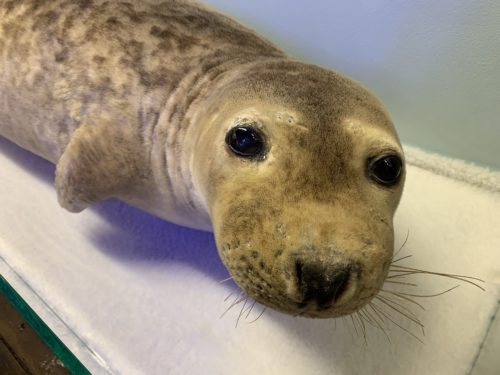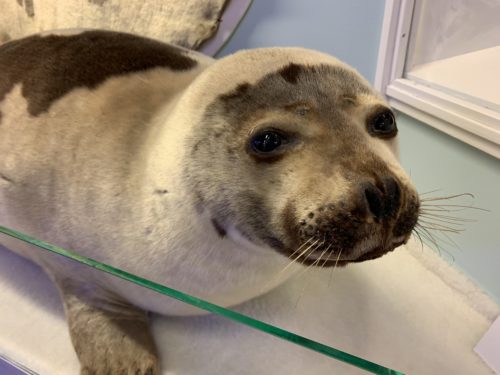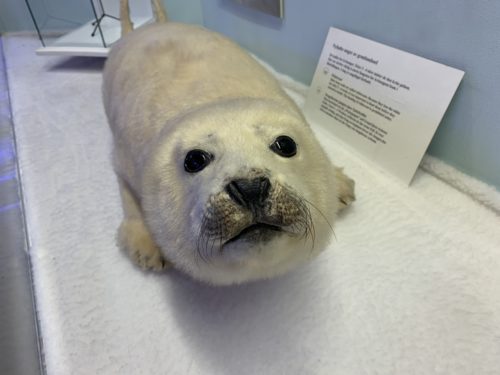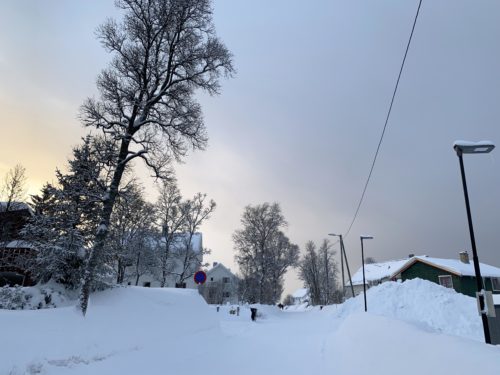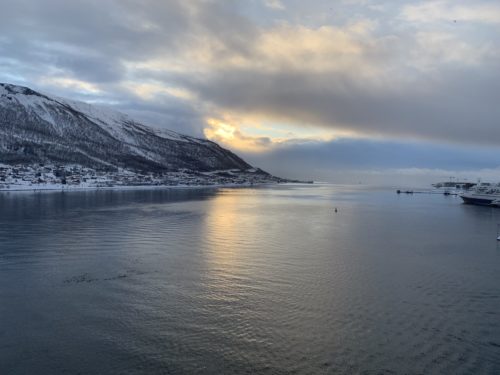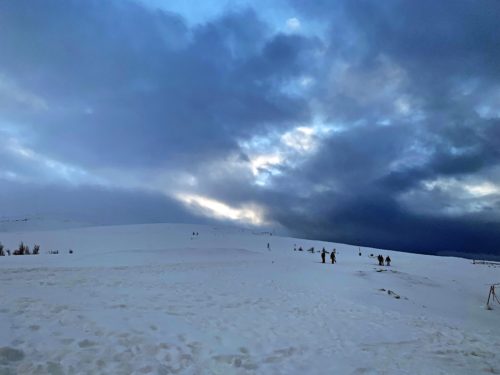Part of my arctic adventure includes visiting Sami people, where we hear about their culture and language. The Sami are traditionally nomads who follow the reindeer as they migrate in the search for better pastures. Nowadays, the reindeer are kept closer to home, sometimes fenced in, and the Sami live not in tents but in wooden houses.
I am not sure how sustainable this modern type of farming is compared to the traditional migrations. During the winter, I fear that the reindeer overgraze the slow-growing vegetation. Their feed is even supplemented with lichen that the Sami gather during the summer and autumn. It could be interesting to learn more about this lifestyle someday, perhaps during a summer visit to the area. As it is, we ride in sleighs pulled by reindeer in the winter darkness. It is so dark that I never even see who I am sitting beside.
Besides meeting reindeer and Sami people, another main winter attraction of Tromsø is to try and catch a glimpse of the eerie northern lights (Aurora Borealis).
That is not so easy. It requires clear skies (and we experience lots of clouds and snow) and active solar winds (which is not in the stars for us, unfortunately).
The shimmering green curtains in the sky that I had hoped to see do not appear and, unfortunately, I am caught off guard and do not have my tripod with me when something finally turns up. However, the camera lens is much more sensitive than the human eye (especially when all the settings are adjusted to night photography), so what appears to be a faint and wispy cloud with a slight tinge of green turns out to be quite green once photographed. Back home, I give it a bit more light in Photoshop and voilà – something that looks like an abstract painting created by Mother Nature.

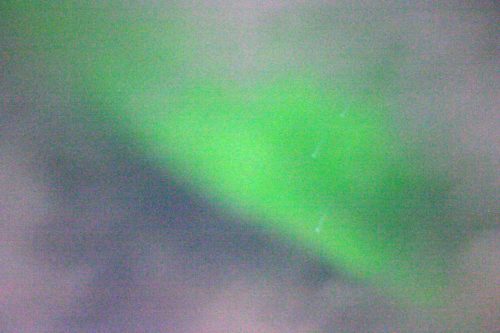
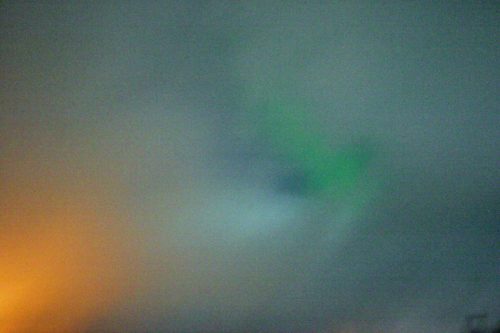 Playing around with night photography for the first time also gives me a shot that looks like an impressionist George Seurat painting.
Playing around with night photography for the first time also gives me a shot that looks like an impressionist George Seurat painting.
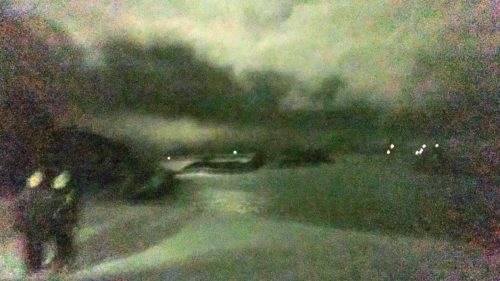


 On the way back to town, I stop in at the Arctic Cathedral (which is actually not a cathedral but a parish church). Its nickname in Norwegian, Ishavskatedralen, means arctic sea cathedral.
On the way back to town, I stop in at the Arctic Cathedral (which is actually not a cathedral but a parish church). Its nickname in Norwegian, Ishavskatedralen, means arctic sea cathedral.
 Note the bridge and the city of Tromsø in the background in the photo below:
Note the bridge and the city of Tromsø in the background in the photo below: 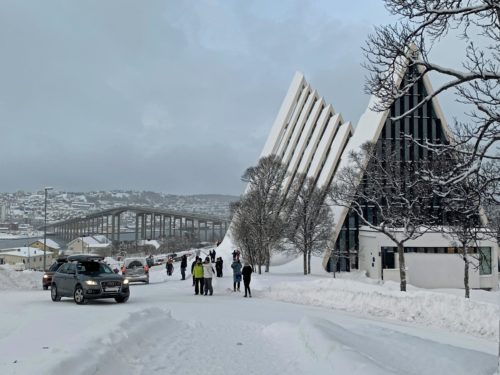
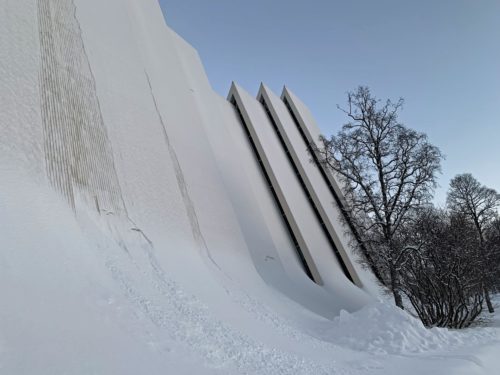 Built in 1965, it has an impressively large and beautiful stained glass window.
Built in 1965, it has an impressively large and beautiful stained glass window.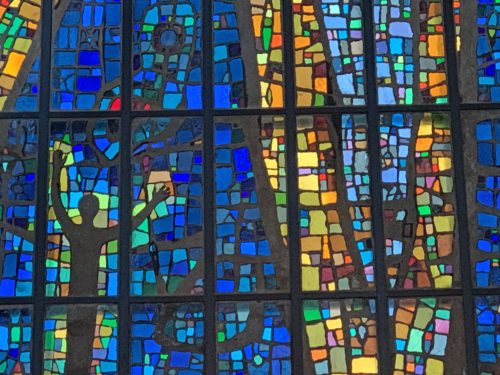
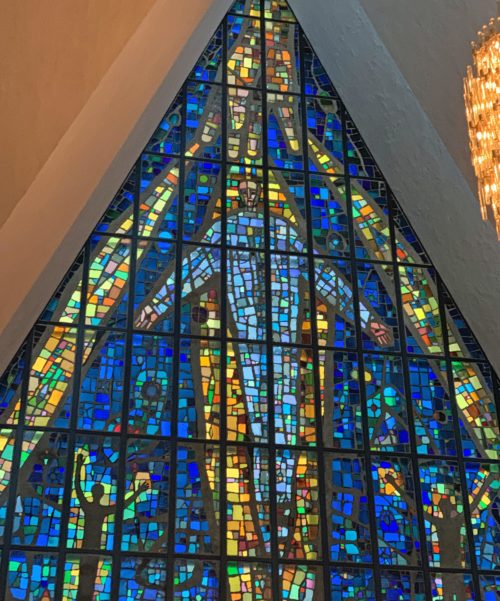
 Returning back by the bridge, I catch a photo of the afternoon light.
Returning back by the bridge, I catch a photo of the afternoon light.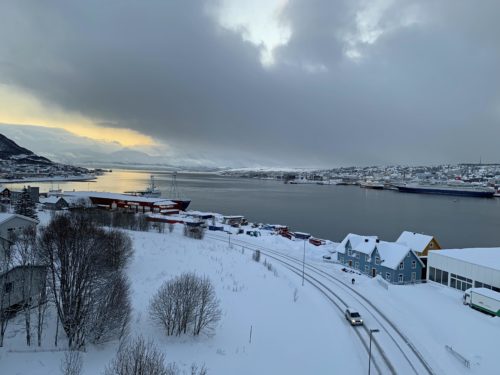 Although north of the Arctic Circle, Tromsø enjoys relatively warm weather compared to other places on the same latitude due to warming from the Gulf Stream. This means that trees can grow. And that many of the buildings are made of wood. The colourful old buildings stand out up in the otherwise white cityscape.
Although north of the Arctic Circle, Tromsø enjoys relatively warm weather compared to other places on the same latitude due to warming from the Gulf Stream. This means that trees can grow. And that many of the buildings are made of wood. The colourful old buildings stand out up in the otherwise white cityscape.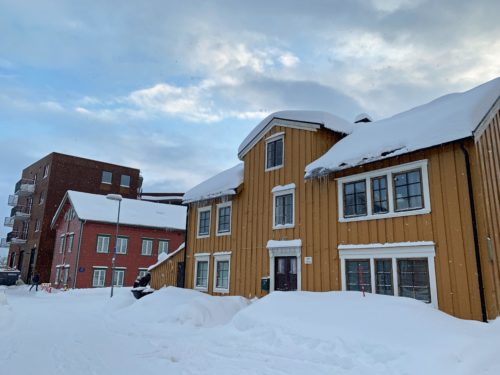

 Tromsø Cathedral was built in 1861 and is Norway’s only wooden Protestant cathedral.
Tromsø Cathedral was built in 1861 and is Norway’s only wooden Protestant cathedral.
 The excellent Polar Museum describes the various adventures, many of which went to the Svalbard archipelago that lies even farther north and is even more remote than Tromsø. The area teemed with furry or blubbery wildlife, so the hunt was on for various types of seal as well as walruses, polar bears, Arctic foxes, reindeer, whales, birds and fish.
The excellent Polar Museum describes the various adventures, many of which went to the Svalbard archipelago that lies even farther north and is even more remote than Tromsø. The area teemed with furry or blubbery wildlife, so the hunt was on for various types of seal as well as walruses, polar bears, Arctic foxes, reindeer, whales, birds and fish.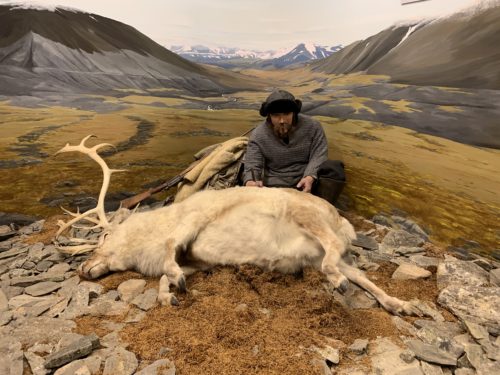
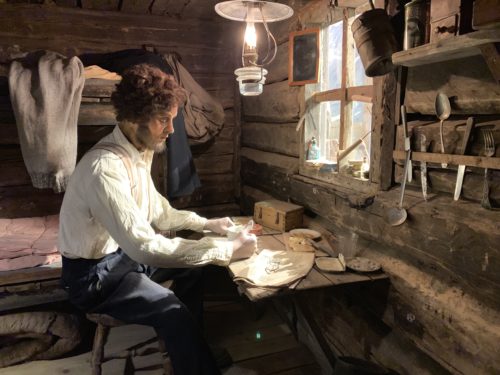 The numbers of polar bears killed in the period up to as late as the 1970s is appalling, as were some of the methods used. In the 1920s, for example, about 900 polar bears were killed every single year. The hunters used guns, poison, traps, and baited self-shooters like the contraption pictured below, where the polar bear pokes its curious head into the baited box and triggers a sawed-off gun that shoots it. Sometimes the polar bear died; sometimes it was merely wounded. Often, motherless cubs were left behind.
The numbers of polar bears killed in the period up to as late as the 1970s is appalling, as were some of the methods used. In the 1920s, for example, about 900 polar bears were killed every single year. The hunters used guns, poison, traps, and baited self-shooters like the contraption pictured below, where the polar bear pokes its curious head into the baited box and triggers a sawed-off gun that shoots it. Sometimes the polar bear died; sometimes it was merely wounded. Often, motherless cubs were left behind. Seal pups, like the three different kinds of stuffed ones pictured below, were bashed on the head with a blunt instrument to render them unconscious after which they were hit on the head with the spiked side of the same instrument to kill them – instantly, so it is said.
Seal pups, like the three different kinds of stuffed ones pictured below, were bashed on the head with a blunt instrument to render them unconscious after which they were hit on the head with the spiked side of the same instrument to kill them – instantly, so it is said.